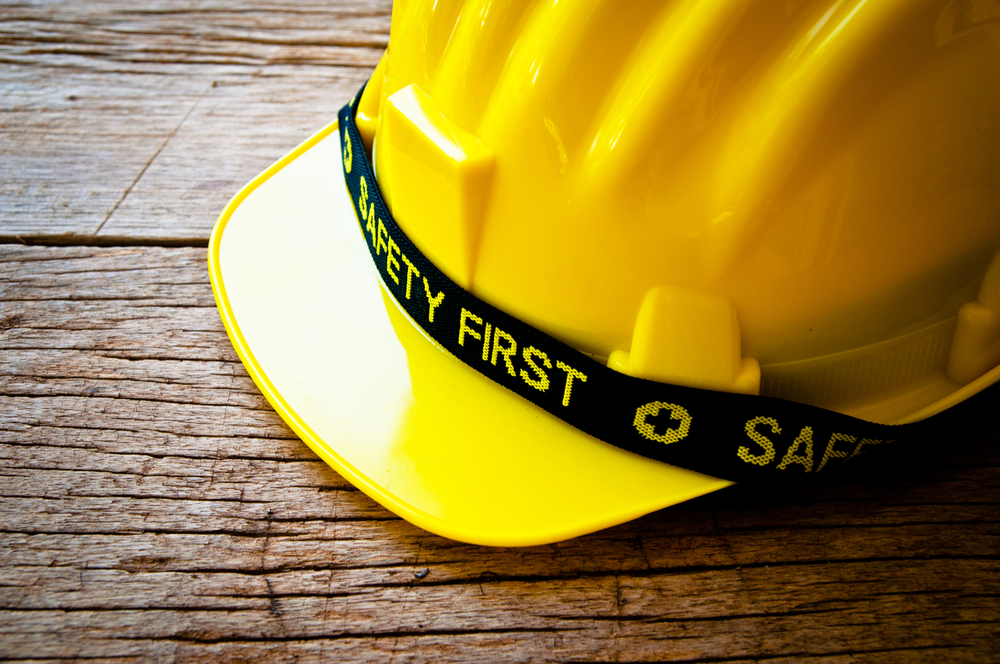News Post
July 2015 Newsletter
Skin Cancer and Work
By Tony Barron SMSE Consultant
As the good old British summer fast approaches (maybe) companies with staff who work outside need to consider if there policies and procedures are in place and effective.
The frightening statistic is that in the UK, solar radiation exposure claims the lives of 60 workers each year and there are around 1,700 cases of work-related skin cancer registered annually.
In order to help raise awareness of solar radiation risks and to equip businesses with tools to take action the Institute of Occupational Safety and health (IOSH) has organised information on the risks and preventative measure companies can take.
The IOSH website with a range of information and free resource packs can be found at notimetolose.org.uk
Insufficient guarding leads to serious injuries, court hears
A Rotherham recycling firm has been sentenced over serious safety dangers on a conveyor after a worker had his arm broken in three places when it was drawn into unguarded machinery. HSE said that the incident had a profound psychological impact on the worker at a crucial time, as his daughter was born just three weeks later.
The worker, also suffered a cracked shoulder blade and had a radial nerve shredded to the bone in the incident at the metal recycling company C F Booth Ltd.
An investigation by HSE identified:
- a guard by the tail drum where the worker was operating had been removed and there was no emergency stop button. There was an emergency stop cord down one side of the conveyor but nothing immediately to hand by the tail drum;
- guarding on the whole conveyor was insufficient;
- the company had no management system to check that guards were in place and that emergency stops and/or pull cords were working; and
- the company had received written advice from HSE in May 2013 relating to the guarding of end drums on other conveyors on site.
Rotherham Magistrates heard that the worker, who was relatively inexperienced, had been on his own at the time and was attempting to remove a blockage from the conveyor. He had believed the machine would need an electrician to restart it once it had cut out due to the blockage.
However, once he had cleared the debris, the machine started running and his arm was drawn in and badly injured.
The court heard that the worker had needed a nerve removed from his calf to try to repair the arm damage. As well as being unable to cradle his new-born child, the surgery had meant a loss of feeling in his leg. He is still on medication and has not been able to return to work since.
C F Booth Ltd, of Armer Street, Rotherham, was fined £15,000 and ordered to pay costs of £1,595 after pleading guilty to breaching the Health and Safety at Work etc. Act 1974.
After the hearing, the HSE inspector said: “This was a horrifying incident that has left the worker with perhaps a permanent physical impairment. It also had a profound psychological impact on him at a crucial time for a young family.
“Incidents of this kind occur all too frequently in the recycling sector and the onus is on companies, like CF Booth Ltd, to acknowledge the dangers posed by unguarded machinery in general, and tail end drums of conveyors in particular, and to take action. The company had been warned before and there can be no excuse for its subsequent failings.
“Employers have a duty to ensure that machinery is properly guarded and should take steps to ensure that guards remain in place. HSE will continue to prosecute when worker safety is compromised.”
Sentencing after 16-year-old apprentice suffers severe hand injury at timber firm
A timber mouldings manufacturer in Rochdale has been fined after a young apprentice lost two fingers of his right hand while working on machinery. An investigation found that there was no safe system of work in place as well as a lack of instructions and training.
The 16-year-old was an apprentice with Dresser Mouldings (Rochdale) Limited and was working alongside an experienced colleague on a moulding machine when the incident happened.
Trafford Magistrates’ Court heard that the teenager had been working on the machine at the company’s Station Yard Sawmill, when a piece of wood jammed and would not feed through properly.
The machine was opened to try to rectify the problem. The teenage apprentice was looking inside and trying to help adjust the machine when his gloved right hand caught on the rotating central blade.
His right hand was severely injured, and he lost the entire middle finger and part of the thumb.
An investigation by HSE found that the company had failed to effectively prevent access to the dangerous parts of the machinery.
Dresser Mouldings (Rochdale) Ltd, of Station Yard Sawmill, Wood Street, Rochdale, was fined £18,000 with costs of £844.50 after pleading guilty to breaching section 2(1) of the Health and Safety at Work etc. Act 1974.
After the hearing, the HSE inspector, said: “This incident could have been easily prevented if the company had suitable measures in place to ensure workers did not come into contact with the rotating blade on the machine. In this case the machine should have been switched off.
“There was no safe system of work in place for the task as well as a lack of instructions and training to ensure workers knew how to carry out the task safely.
“Instead, the firm’s failures led to a young worker suffering a severe injury, losing a finger and part of his thumb.”
London council in court after decade of ignoring asbestos risks
Waltham Forest borough council has been fined after it exposed members of staff and visiting contractors to the potentially lethal dangers of asbestos, which it knew to be present in the Town Hall basement. The case came to light after a member of the public contacted HSE’s Myth Buster Challenge Panel after being refused access to documents that were “contaminated with asbestos”.
HSE said that the council was aware of the asbestos in the basement as far back as 1984 and was also aware of its duty to manage the risks associated with asbestos exposure. However it failed to do so over more than a decade.
The court heard how the hazardous material was identified in a survey commissioned by the council in 2002, yet it failed to take adequate action to act on the findings and put effective controls in place. As a result employees and visiting contractors were allowed to carry on working in the basement regardless of the dangers for the next ten years.
Westminster Magistrates’ Court heard that the issue only became public by chance in mid-2012 when a local resident put in a request to the council to see some election expenses documentation. The authority denied the request with the reason that the paperwork was contaminated with asbestos.
As a result, the resident approached the HSE’s Myth Buster Challenge Panel, which in turn referred the concern to HSE inspectors in north east London to investigate further.
HSE found that the council had a second asbestos survey carried out in January 2012. This had quickly identified problems of asbestos in the boiler room and other areas of the basement. The survey also highlighted that areas identified in the 2002 survey had not been remedied.
The court heard that Waltham Forest had no plan in place for managing the well-known risks of asbestos and there was an inadequate system in place for inspecting asbestos at the Town Hall.
HSE served an improvement notice on the council requiring them to put in place a proper management plan dealing with the presence of asbestos. Inspectors also interviewed a number of employees and contractors who had used the basement over the years, including print-room staff who were based down there.
Waltham Forest Borough Council was fined a total of £66,000 and ordered to pay £16,862 in costs after pleading guilty to two breaches of the Health and Safety at Work etc. Act 1974 and a breach of the Control of Asbestos Regulations 2006.
After the hearing, the HSE inspector said: “Waltham Forest was aware of the asbestos in the basement as far back as 1984. It was also aware of the risks from asbestos exposure and of its duty to manage those risks. However, the authority singularly failed to do so over more than a decade. Over that period, an unquantifiable number of its own employees plus workers from maintenance companies and similar were regularly exposed to these hazards.
“Asbestos-related disease has a long latency and it is impossible to ascertain what injury may have been caused in this case. But asbestos is a known and powerful carcinogen and owners or managers of non-domestic premises, such as councils, have a legal duty to manage the material in their buildings and have measures and controls in place to protect workers and the public from being exposed.”
Cheshire firm in court after workers potentially exposed to asbestos
A laboratory design and installation specialist has been fined after exposing workers, pupils and teachers to asbestos material at a school in Suffolk.
The incident occurred during refurbishment work to modernise parts of Newmarket College School’s Science block. During the work, managed by Labform Ltd, sub-contractors disturbed asbestos as they were removing a wall and channelling the floor.
The Cheshire firm was prosecuted at Magistrates Court after an investigation found that the company had not arranged for a detailed Refurbishment and Demolition Asbestos Survey to be undertaken, as was required.
Labform Ltd, of Lymm, Cheshire, was fined £22,400 and ordered to pay £11,741 in costs after pleading guilty to four breaches of the Control of Asbestos Regulations 2012.
Speaking after the hearing, the HSE Inspector said: “Exposure to asbestos fibres is a serious and well known health risk, so it is essential that duty-holders take suitable and sufficient measures to prevent the disturbance, spread and exposure to asbestos.
“Failing to take action to identify asbestos while planning work, and to ensure that any contractors who may disturb asbestos are aware of the location and type of asbestos present, and not taking appropriate measures to protect the health of others, is totally inexcusable.”
Total fined after worker falls into molten sulphur
One of Britain’s largest oil refineries, Total Lindsey Oil Refinery in North Lincolnshire, has been fined after a worker suffered serious burns when he stepped into an open manway lid and hit 140 degree molten sulphur below, seriously burning his right leg.
Grimsby Magistrates heard that tanker driver, had just finished loading the dangerous substance into the vehicle and was attempting to detach the special loading lance from a loading arm when his foot went into the open lid and into the tanker.
He managed to pull himself out but the molten sulphur caused serious burns to his right leg. He was unable to work for three months and needed extensive skin grafts, following the incident.
Following the HSE investigation into the incident, the court heard that Total had no effective safe system of work in place in relation to the attaching and detaching of the loading lance. The hazard of working on top of the tanker had not been adequately identified or assessed.
HSE served an Improvement Notice on the company to make sure safety systems for loading were improved. Total then installed a new articulated loading arm on the unit loading area. Meaning a loading lance no longer needs to be attached or detached during loading operations.
Total Lindsey Oil Refinery, East Field Road, North Killingholme, North Lincolnshire, was fined £20,000 and ordered to pay £2,641 in costs with a victim surcharge of £120, after admitting a breach of the Health and Safety at Work etc. Act 1974.
After the hearing, the HSE said: “The driver sustained extremely painful injuries, which still affect him now. Yet this incident could have been avoided if Total had identified the dangers associated with attaching and detaching the loading lance and then taken action to reduce those risks.
“Loading molten sulphur is a common task within the refining industry. Total had two other loading units on site with a different system whereby a loading lance does not have to be attached to the loading arm.”
Latest News
Health and Safety in Schools Checklist
Health and safety should be a top priority in any workplace, but especially in schools. Not only are you responsible for your staff’s safety, but you need to maintain the welfare of your pupils too. To do so, you must uphold your legal complian..
It can be difficult to decide your future path - a lot can ride on it, after all - but a career in health and safety could be the right choice for you. There are several types of careers in the health and safety industry that might be a good fit..
What is ISO 45001?
If you’re wondering what ISO 45001 is, then this is the guide for you. Replacing the old OHSAS 18001 standard, ISO 45001 is the new international standard for occupational health and safety management. In this guide, we'l..
Who Enforces Health and Safety?
The enforcement of health and safety is crucial to maintain healthy workplaces. The term health and safety itself covers the safety legislation and safety law that comes under the Health and Safety at Work Act 1974. In general, this means t..
Health and safety training is a requirement in the workplace, no matter which sector you work in. Our experts at SMS Europe have been providing an extensive range of specialist health and safety services for almost 20 years. To help make work en..
Health and safety in the workplace is all about controlling risks in a way that protects both your employees and your company. Strong leadership, including your employees, managers, suppliers, contractors, and consumers, is a characteristic of great ..
Health and safety in the workplace is immeasurably important. But, without the Health and Safety at Work Act of 1974, we might have never prized safety so highly. This piece of workplace legislation is highly significant and indeed has transform..
Fire Safety and Fire Risk Assessment at Leased Offices and Buildings Fire safety at leased single and multi- tenanted offices can be approached in a number of ways. Generally speaking, there are three types of premises, (single occupancy lea..
Safety Gloves
Please have a read at SMSE Managing Director Philip Marsden's article on Safety Gloves which is published in the February 2022 edition of Health and Safety International Magazine. https://www.hsimagazine.com/article/fits-like-a-glove/ We wo..
Current Health and Safety Industry Trends
New Guidance Released for Managing Home Workers As an employer, you have the same health and safety responsibilities for those who work from home as you do for all other employees who may work from the workplace. In most cases, the dange..
Who Is Responsible for the Health and Safety on a Building Site? Legally, the responsibility of health and safety within the business lies with the employer. It is up to them to make sure the environment meets the necessary health and safety requi..
No one wants to be injured whilst at work, and no one wants their staff to be injured, especially whilst on the job. That doesn’t mean that accidents don’t happen. In fact, each year an average of 22 manufacturing workers die in workplace..












